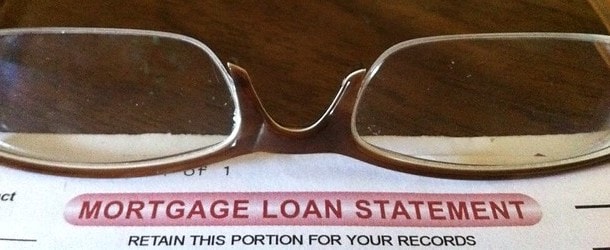If you’re a homeowner, or just became one during the pandemic, you’ve likely heard of mortgage forbearance.
Not to be confused with mortgage forgiveness, it allows borrowers to suspend mortgage payments for a period of time if experiencing a hardship related to COVID-19.
Eventually those missed payments need to be repaid, likely via a payment deferral where they’re set aside and paid off via refinance or home sale.
Some 8.46% of mortgages are now in forbearance, per the latest Forbearance and Call Volume Survey from the Mortgage Bankers Association (MBA).
The most widely used forbearance program is offered via the CARES Act because it covers a wide swath of the mortgage market, including loans backed by Fannie Mae and Freddie Mac, along with FHA loans, USDA loans, and VA loans.
Recently, the Consumer Financial Protection Bureau (CFPB) and Conference of State Bank Supervisors (CSBS) released additional guidance regarding mortgage forbearance to ensure it’s being implemented correctly.
While it’s geared toward mortgage lenders and loan servicers to ensure they’re in compliance of the CARES Act and not causing consumer harm, it could serve as a consumer guide as well.
No Documentation Is Required for Mortgage Forbearance
While you must attest to having a COVID-19-related hardship in order to qualify for mortgage forbearance, no other documentation is required.
Sure, you can provide your lender or loan servicer with a forbearance request letter to satisfy that attestation, but they can’t ask for proof that you’re unable to make your mortgage payment(s).
That means you don’t need an explanation letter from your boss, nor should you have to submit bank statements or pay stubs.
All a borrower must do is request forbearance verbally or in writing and attest to a COVID-19 hardship.
Note: Once the forbearance period ends, you may be required to provide income documentation if a loan modification is required to repay the missed payments.
Loan Servicers Can’t Decide If You Need Forbearance
Not only is documentation not required, but loan servicers also can’t decide if you need mortgage forbearance or not.
Even if they don’t have your current income or employment information, they might still make the argument that you don’t need it or only require it for a limited period of time.
Ultimately, that’s not their decision to make, and if you request it, it should be granted if otherwise eligible.
Servicers are permitted to “work with the borrower to better understand the borrower’s situation” but must be careful not to mislead or dissuade them from requesting forbearance.
Any information obtained from the borrower during this discovery process “has no bearing on the servicer’s provision of a CARES Act forbearance.”
A servicer also can’t dissuade you from requesting forbearance by offering limited repayment options (like a lump sum payment) or making it look less favorable.
You Can Get Up to 360 Days of Mortgage Forbearance
Additionally, lenders/servicers don’t get to choose the amount of time the forbearance is in place.
While the CARES Act stipulates forbearance for “up to 180 days,” and allows servicers to offer shorter increments to start, such as 90 days, they can only do so at the borrower’s request or with their consent.
And they must extend any shorter periods unless agreed by the borrower. In other words, they need to be careful if offering a period less than 180 days because they will need to extend it no questions asked.
Or they’ll have to get in contact with the borrower and ask to stop it to avoid any unintended lapses.
Once the initial 180 days nears an end, the borrower can request an additional 180 days as well, and the servicer must grant it, no questions asked.
You Can Request Forbearance Even If Already Delinquent
While the CARES Act forbearance plan was designed during the COVID-19 outbreak, it also applies to those who were delinquent prior.
Simply put, a servicer must grant forbearance to any borrower with a federally-backed home loan that attests to a COVID-19 related hardship, regardless of their delinquency status.
So a homeowner could have been 30 days late on the mortgage before President Trump’s March 13th, 2020 emergency declaration and still request forbearance.
Similarly, the mortgage servicer is required to report your account as current if your mortgage was current at the time of the forbearance request.
If your mortgage was delinquent before the COVID-19 emergency declaration, they must maintain the same delinquency status during the forbearance.
And if you bring your account current during the forbearance period, they must report the loan as current.
Tip: There Will Be a 3-Month Waiting Period to Get a Mortgage After Forbearance
Lenders Can’t Discourage You to Ask for Forbearance After Getting a New Loan
Even if you aren’t considering mortgage forbearance, you might get hassled about it if taking out a new home loan right now.
For example, if you’re refinancing a mortgage or buying a property, the lender may bring up the topic when your loan is close to funding.
Whether fair or not, lenders are on the hook for some big financial penalties if the loans they originate quickly go into forbearance post-closing.
Apparently, some originators have structured “closing attestations in a manner designed to discourage borrowers that subsequently experience a COVID-related hardship from requesting forbearance.”
In other words, they might be warning borrowers not to request forbearance to protect their own financial interest, when in reality the borrower has that right if there are unforeseen consequences that lead to the need.
This explains the more robust underwriting environment at the moment, including additional income and employment checks to ensure you can repay the loan as agreed given the uncertain circumstances.
Read more: What’s the Last Day to Apply for Mortgage Forbearance?

